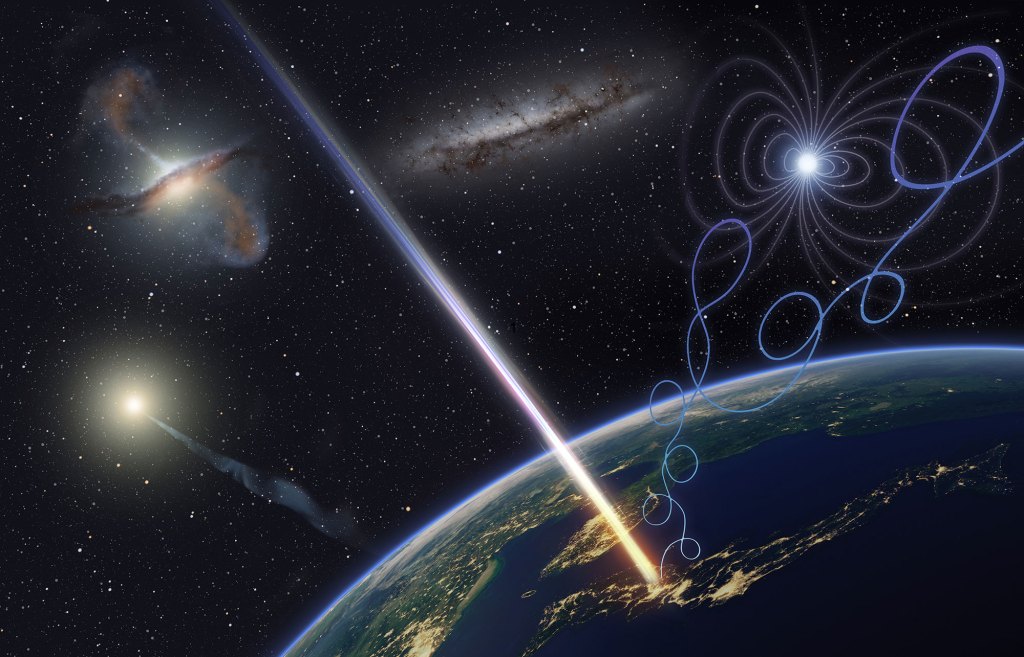Scientists have discovered that components of antimatter, which is a bizarro version of the regular matter we experience in our daily lives, can travel thousands of light years across the Milky Way, reports a new study. The discovery could potentially shed light on the nature of dark matter, an unidentified substance that remains one of the biggest unsolved mysteries of the universe.
Stars and planets are made up of the same familiar matter that we encounter in our daily lives, but far more exotic substances exist in our cosmos. Antimatter, a substance that is made of particles with the opposite charge of regular matter, is much less abundant than the “normal” stuff we interact with, but it can be generated and studied in laboratories.
Videos by VICE
Dark matter, however, is still a huge question mark in our models of reality. Unlike antimatter, this substance is extremely abundant in the cosmos, which means its gravitational influence on other objects can be observed. However, dark matter has never actually been directly observed, sparking a host of inventive techniques to try to snag a detection that might finally unravel this important enigma. Probing antimatter may offer a way forward.
One possible method to search for dark matter is to capture “antinuclei,” which are the antimatter versions of the nuclei found in normal atoms. Antinuclei might be generated by interactions between dark matter particles, distinguishing them as a potential window into the longstanding question the nature of this elusive material. However, most antinuclei are forged in the dense messy region near the center of our galaxy, tens of thousands of light years away from Earth, so it’s not clear how many of these messengers can reach us across that vast distance.
Now, scientists have used the ALICE detector at the Large Hadron Collider, the biggest particle accelerator on Earth, to estimate the “transparency” of our galaxy to helium antinuclei, a measurement that makes it possible to estimate how far these particles can travel before they encounter regular matter and disappear.
The results revealed that antinuclei may indeed voyage across the Milky Way to reach Earth, making them “a very promising channel for the discovery of dark matter” now that we know we can likely detect them here, according to a study published on Monday in Nature Physics.
“Antinuclei don’t travel straight through the galaxy because they are charged and there are magnetic fields” in the Milky Way, said Maximiliano Puccio, a member of the ALICE collaboration and a co-author of the new study, in a call with Motherboard. “This means they have a very contorted path of coming to the Earth that is much longer than the linear distance from the center of the galaxy.”
“When we put all the ingredients together” at CERN “and we saw that half of the [antinuclei] survive, that was quite something,” he added, noting that the finding suggests that these strange particles can wind up around Earth.
Scientists have already been looking for these antinuclei in space with experiments such as the Alpha Magnetic Spectrometer (AMS), which is mounted on the International Space Station, but no detection has been clearly confirmed yet. Next year, researchers plan to build on this quest with a stratospheric balloon-borne experiment called the General Antiparticle Spectrometer (GAPS), and there are also plans to place an antinuclei detector farther out in space, about one million miles from Earth.
Puccio and his colleagues have provided more evidence that snagging antinuclei is not a pipe dream, as the ALICE experiment hints that many of these particles could end up around Earth, loaded with potential information about dark matter.
“What we need to do to really pinpoint this to a dark matter origin is to measure the energy distribution of these particles,” Puccio said. “Those that come with really low kinetic energy are mostly coming from dark matter, supposedly, if the dark matter is there. If it’s at high energy, we know that this is more due to standard model processes that we already know about, and are less interesting in that way.”
“Different masses of the dark matter particle give different energy distributions of the antinuclei being produced, so measuring the energy distribution of the antinuclei flux will constrain our knowledge of the dark matter particle mass,” he added.
In other words, these antinuclei could reveal the mass range of these hypothetical dark matter particles, thereby narrowing down which of the competing dark matter models is likely to be correct. This information could be vital to finally capturing a direct detection of this mysterious substance, a breakthrough that is essential for understanding the evolution and structure of our universe.
In addition, these studies of antinuclei are pioneering our understanding of the weird materials in our universe that exist outside of our regular experience of reality. To that end, Puccio and his colleagues are eager to learn more about these particles both in outer space, and in laboratories here on Earth.
“Antinuclei are very rare, so when we do such a measurement it is mostly to discover new things,” Puccio concluded.




